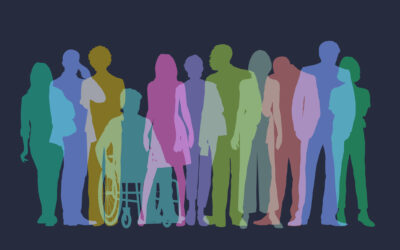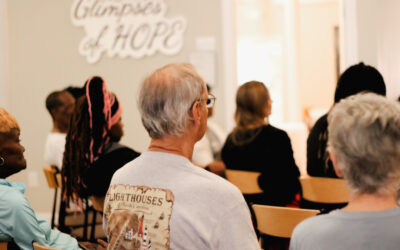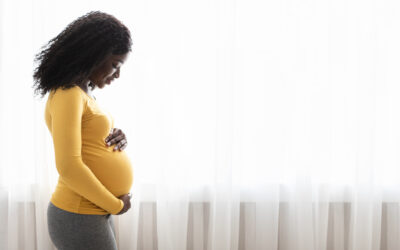Pulse is AMCHP’s bi-monthly online magazine. Each issue focuses on a different topic and is shared with the entire AMCHP family, including members, partners, and others interested in MCH issues. Never miss our updates! Sign up for our newsletters to receive the latest in maternal and child health news and AMCHP publications straight to your inbox. Subscribe now
A Message from our CEO, Terrance E. Moore
Welcome to the March edition of Pulse. Spring is right around the corner, and I’m gearing up to gather with you, our partners, and stakeholders at AMCHP’s annual conference, Partnering with Purpose, in Oakland, California. So far, more than 1,000 MCH leaders and...
Maternal and Child Health Epidemiology Today: Strengthening MCH Now for the Future
By Meagan Robinson Maynor, DrPH, MPH, Senior Program Manager, Epidemiology, Evaluation and Metrics, Association of Maternal & Child Health Programs (AMCHP) Introduction Maternal and child health (MCH) epidemiology has been defined as “the systematic...
Building Bridges to Better Health: Arizona’s Collaborative Model for the Maternal and Child Health (MCH) Needs Assessments
By Martín F. Celaya, MPH, Arizona Department of Health Services Arizona is a state well known for its diverse geography and vibrant communities. With a population of more than 7.3 million people, the state is widely characterized by its arid desert landscapes,...
Puerto Rico’s Title V Health Needs Assessment: Facing the Challenges Head On
By Marianne Cruz-Carrión, MS and Norma Boujouen Ramírez, PhD, Puerto Rico Department of Health Introduction The Puerto Rico Title V program’s interdisciplinary team has members from the health, social sciences, and behavioral health fields. The team took a...
Sustainability as a Fundamental Construct in the Evaluation of Maternal and Child Health Programs: A Case Study of the Maternal, Infant, and Early Childhood Home Visiting Program
By Mikayla Charles, MPH, Program Analyst, Epidemiology, Evaluation, and Metrics, Association of Maternal & Child Health Programs (AMCHP) Introduction Evaluation is the cornerstone for determining a program's effectiveness, feasibility, and impact from...
Using the National Survey of Children’s Health Data to Address Health Disparities and Health Equity in Your State
Submitted by The Data Resource Center for Child and Adolescent Health (DRC) Health equity and health disparities have a major impact on health care delivery in the United States. The concepts of health equity and health disparities are intertwined....
A Reframing of, and Return to, the Basics of Health Equity
By Jasmine Bihm, DrPH, MPH, Director, Health Equity Innovation and Implementation, and Hawi Teizazu, PhD, Associate Director, Health Equity Innovation & Implementation, Association of Maternal & Child Health Programs (AMCHP) Defining Health Equity...
The HOPE (Honor Opportunity Purpose Excellence) Alternative Learning Program: A Replication Success Story
Enhancing Mental Health Support in Schools Lauren’s Journey: A Teacher’s Transformation Lauren was a teacher in her mid-forties working in an alternative school in North Carolina. Her commitment to her students—especially those with complex mental health needs—was...
Building Resilience through Intervention: Growing Healthier Together (BRIGHT) in a Recovery-Affirming Prenatal Care Setting
By Caitlin Clark, MSW LICSW, Clinical Program Manager, Boston Medical Center: Project RESPECT (Recovery, Empowerment, Social Services, Prenatal Care, Education, Community and Treatment) Sitting in the prenatal exam room at 28 weeks pregnant, Casey reflects on...
Moving from Crisis to Collaboration: Advancing Maternal Health with The Practical Playbook III
By Dorothy Cilenti, Clinical Professor of Maternal and Child Health, UNC Gillings School of Global Public Health, and Lindsey Yates, Assistant Professor, UNC Department of Maternal and Child Health - Editors of The Practical Playbook III: Working Together to Improve...
A Message from our CEO, Terrance E. Moore
Greetings! I am still reflecting on all we accomplished at AMCHP’s 2023 Annual Conference, Cultivating Diverse Leaders in Maternal and Child Health. I feel energized, and my expectations were exceeded by participating and observing the information exchange,...
At the AMCHP Annual Conference: Synergizing our Ideas on ‘How’ to Cultivate Diverse Leaders in Maternal and Child Health
By Chery Manon, Senior Communications Manager, Association of Maternal & Child Health (AMCHP) In May, maternal and child health (MCH) leaders across the United States gathered for the 2023 AMCHP Annual Conference, virtually and in person, in New Orleans, to...
Steps Toward “Father-Friendly” Maternal and Child Health (MCH) Programming: Grief Support for Fathers in the World of MCH
By Candice J.T. Simon, MPH, Program Manager, Workforce Development and Capacity Building, Association of Maternal & Child Health Programs (AMCHP) Introduction Few resources are available to help fathers cope with losing a child or partner during childbirth. Even...
Spotlight on a Medicaid Case at the Supreme Court of the United States: Health and Hospital Corporation of Marion County v Talevski
By Sabra Anckner, RN, MSN, Associate Director, Clinical & Community Collaboration, Association of Maternal & Child Health Programs (AMCHP) Occasionally, AMCHP will recap Supreme Court decisions that impact the maternal and child health community. These...
Maine’s Virtual Dental Home Initiative Expands Access to Care
By Becca Matusovich, Executive Director, Children’s Oral Health Network (COHN), and Emilie Knight, Virtual Dental Home Program Coordinator, COHN Background At a recent Virtual Dental Home (VDH) site visit, a group of stakeholders met to learn about and observe the...















